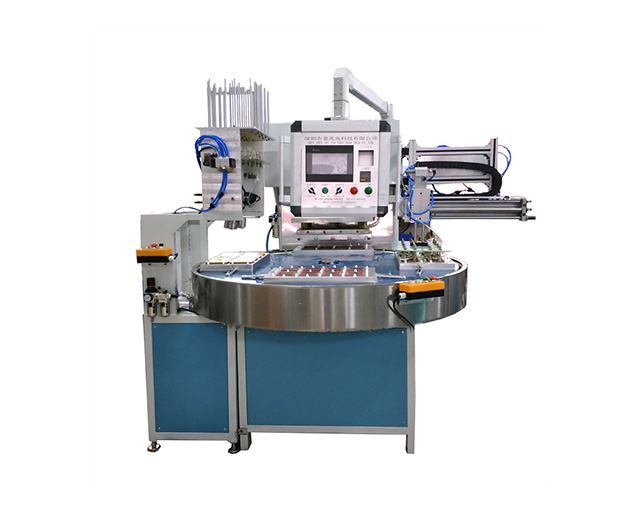Time:2025-07-22 Views:1 source:News

Energy-saving transformation of high-frequency embossing machines not only reduces operational costs but also minimizes environmental impact, making it a priority for manufacturers seeking sustainable practices. Several effective schemes can be implemented to achieve significant energy efficiency improvements.
Upgrading the high-frequency generator is a primary measure. Traditional vacuum tube generators have low energy conversion rates (typically 40–60%), while modern solid-state generators (using IGBT technology) achieve conversion rates of 80–90%. Solid-state generators adjust output power dynamically based on the material’s requirements, avoiding energy waste from overloading. For example, when embossing thin materials, the generator automatically reduces power output, consuming 30–50% less energy than vacuum tube models for the same task. Additionally, solid-state generators have faster response times, reducing idle energy consumption during startup and shutdown cycles.
Installing an intelligent control system optimizes energy usage by synchronizing heating, pressure, and cooling cycles. Sensors monitor material thickness and temperature in real-time, adjusting parameters automatically to avoid overheating or unnecessary energy input. For instance, if the material reaches the required softening temperature earlier than the preset heating time, the system cuts off the high-frequency power prematurely, saving energy. The control system can also implement a sleep mode, powering down non-essential components (e.g., display screens, auxiliary fans) during idle periods, which can reduce standby energy consumption by 50–70%.
Improving heat insulation reduces energy loss from the embossing platens. Adding high-temperature insulation materials (e.g., ceramic fiber or silicone foam) between the platens and the machine frame minimizes heat transfer to the surrounding environment. This allows the platens to maintain temperature with less energy input, especially beneficial for continuous operation. Insulated platens can reduce heat loss by 20–30%, lowering the overall energy demand of the machine.
Recovering and reusing waste heat is another effective strategy. Heat exchangers can capture excess heat from the cooling system (used to cool the generator and platens) and redirect it for space heating in the workshop or to preheat materials, reducing the need for separate heating systems. This scheme is particularly valuable in cold climates, where the recovered heat can offset heating costs by 10–20%.
regular maintenance ensures the machine operates at peak efficiency. Cleaning the high-frequency oscillator, lubricating moving parts, and replacing worn components (e.g., capacitors, contactors) prevents energy-draining inefficiencies. For example, a dirty oscillator increases resistance, requiring more energy to generate the same output. Maintenance schedules should include checking for air leaks in pneumatic systems and ensuring hydraulic systems are properly calibrated to avoid energy waste from excessive pressure.
By combining these transformation schemes, high-frequency embossing machines can achieve energy savings of 30–60%, with a typical return on investment within 1–2 years, making them both economically and environmentally beneficial.
Read recommendations:
hf High Frequency Automatic PVC Welding Machine Double Sided Blister Packaging for Plastic Materials
Where are the applications of wireless sewing machines located?
Complete control over products allows us to ensure our customers receive the best qualityprices and service. We take great pride in everything that we do in our factory.
